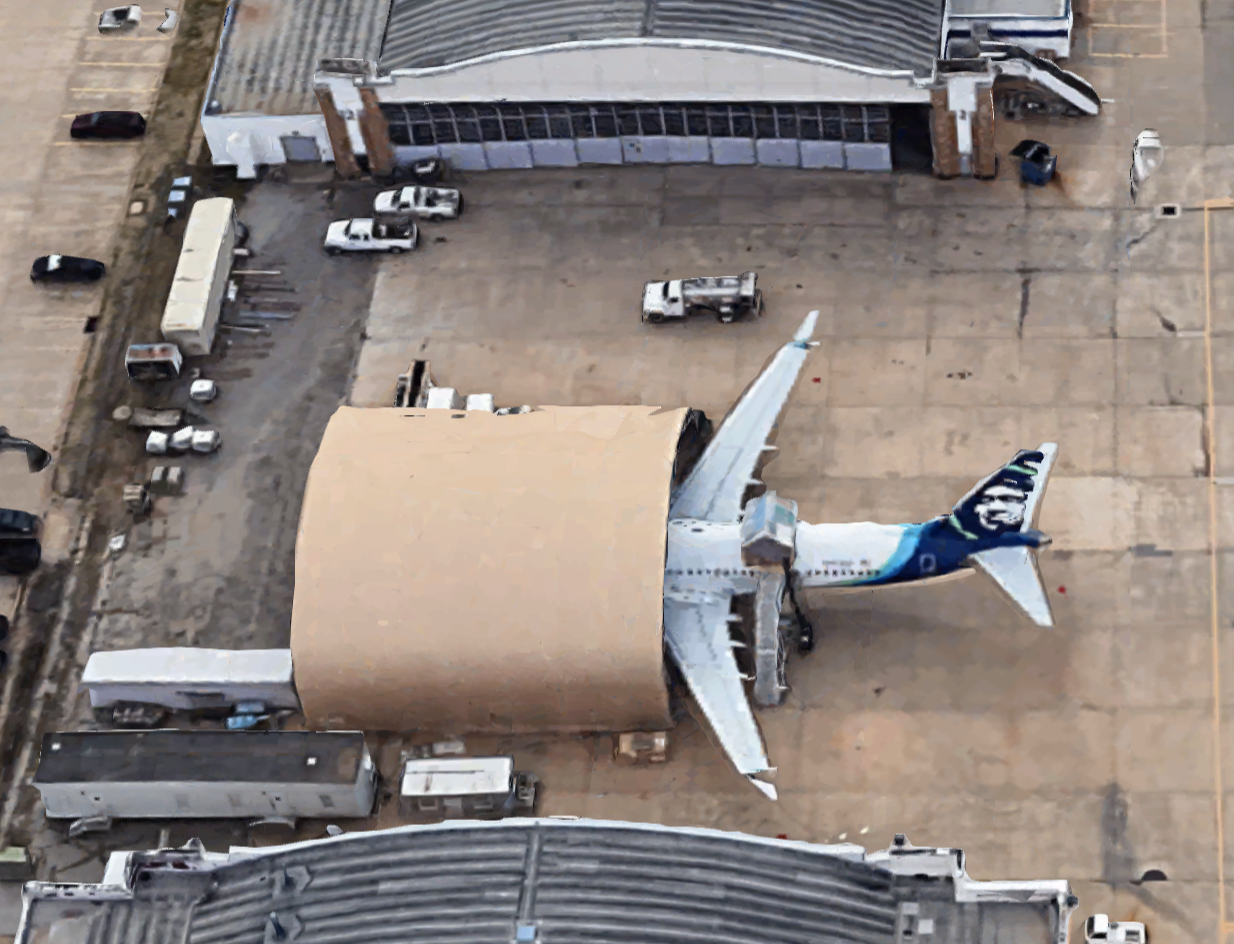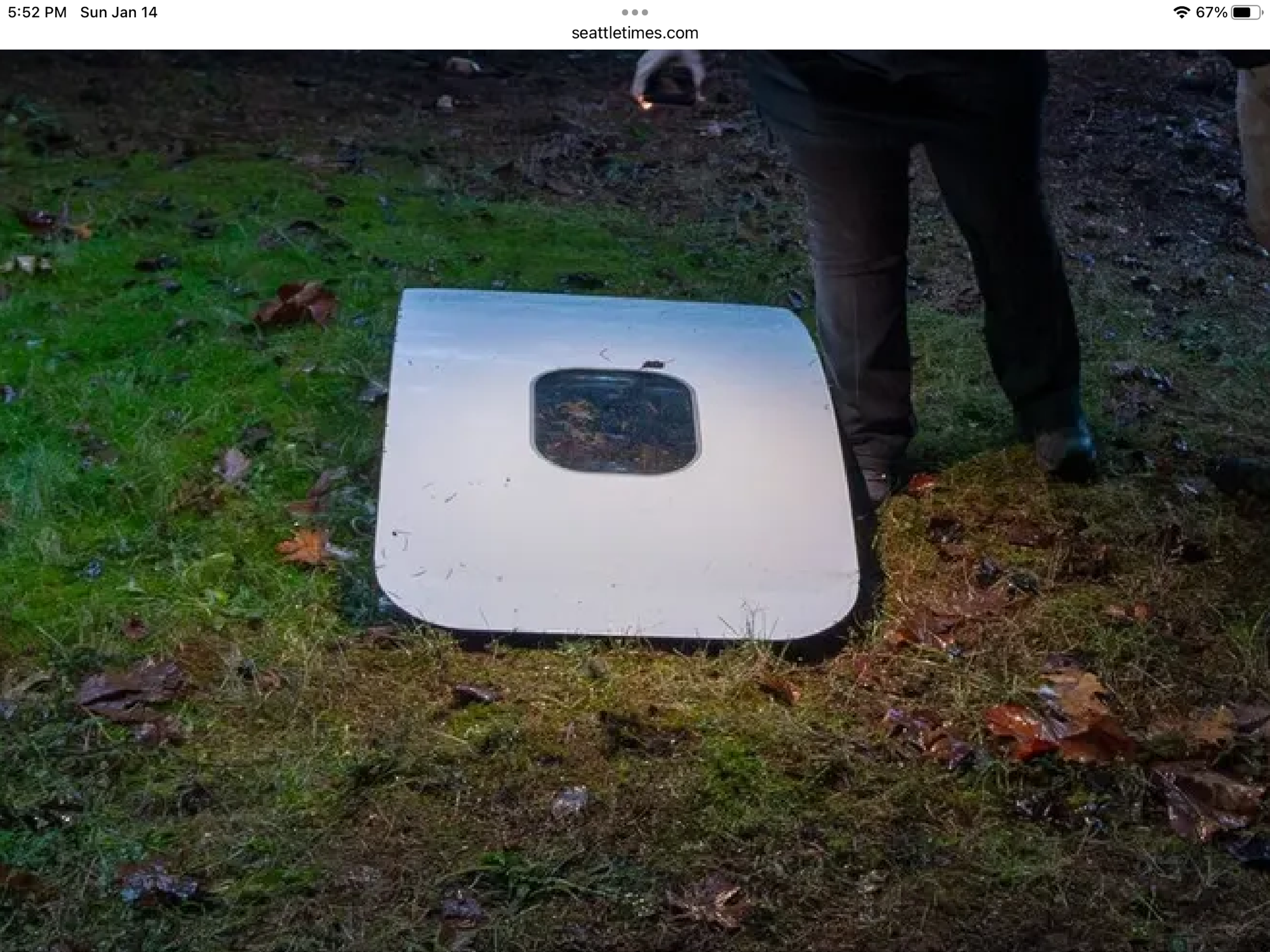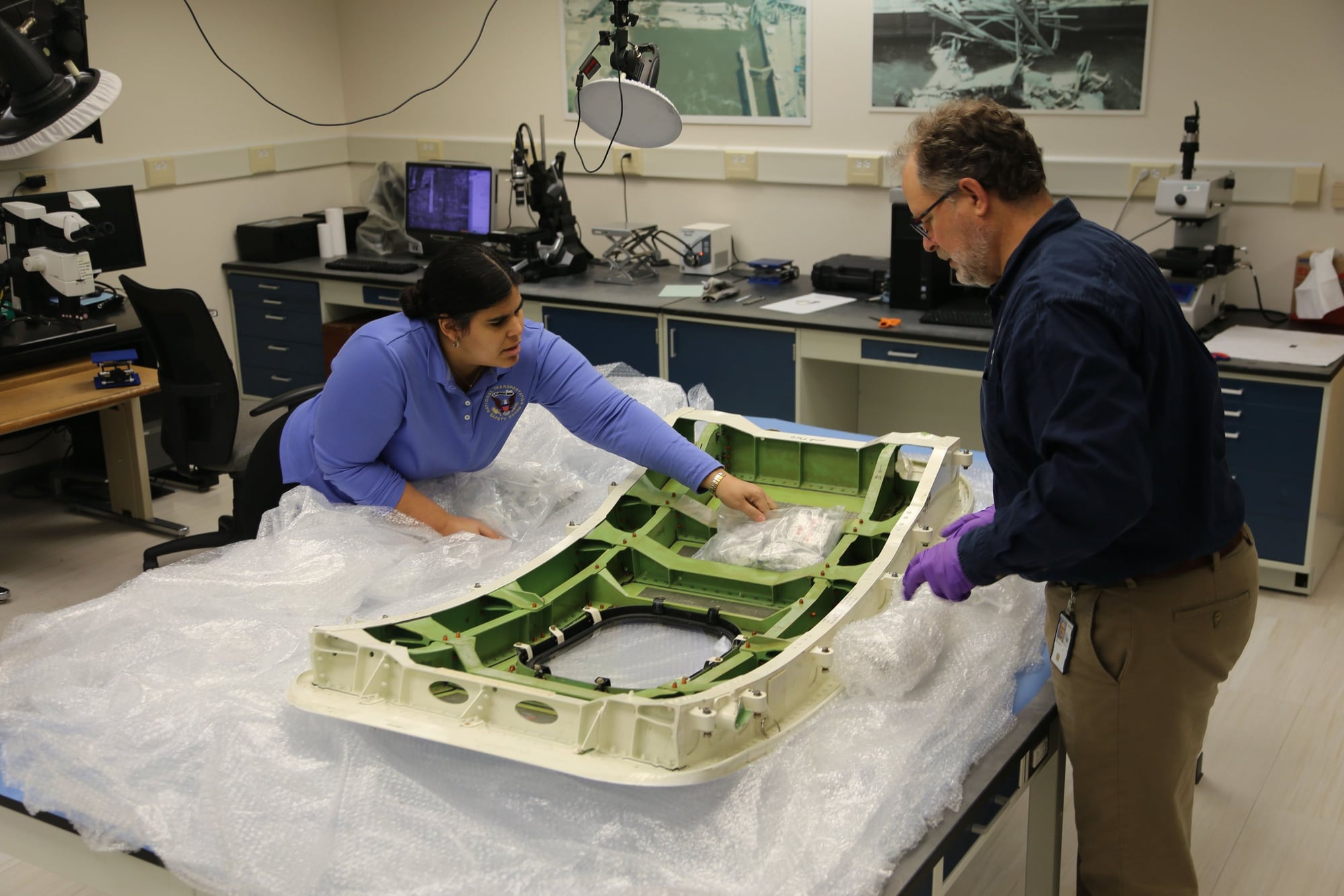Alaska Airlines 737-900 MAX loses a door in-flight out of PDX
Join Date: Jun 2021
Location: Geetown
Posts: 4
Likes: 0
Received 0 Likes
on
0 Posts
Hmmm. Looking at the setup for Wi-Fi installation, it does not look ideal. I'm sure they would need to cut / drill holes in upper fuselage (all this being done outside, albeit under cover of a tent).
Post installation, would, from experience require some form of cabin pressurisation checks, to confirm that the fuselage was sufficiently airtight to return to service post this work being carried out.
Post installation, would, from experience require some form of cabin pressurisation checks, to confirm that the fuselage was sufficiently airtight to return to service post this work being carried out.
Join Date: Aug 2007
Location: Ireland
Posts: 216
Likes: 0
Received 0 Likes
on
0 Posts
It's in the 2 first lines of the Product Details:
"Stainless Steel Set Screws are fully threaded and have hexagon heads.
Stainless Steel Bolts are part threaded and have hexagon heads."
Question is also wether a Clewis Pin would have been the better application for this type of use.
It is what is seen as a stronger part than bolts for holding marine rigging together, also avoiding chance of deformation or fracturing the roller guide in this case, by overthigthening the bolt.
A partly threaded bolt would have had to be made to exact length specification of the non threaded part to avoid pinching. Again these bolts did not pull something together but just acted as a blocker for the rolling pin and the spring load mechanisme. A Clevis Pin would also avoid the possibility of forgetting the split pin since it is the only thing holding it in place. The added castellated nut of a bolt would probably be useless anyway without the split pin.
I alo see some comments on how the split pins before where bent in a certain way. This overbending has been abandoned in the marine industry unless snagging is a factor, because sharp bends is found to weaken the pin. A slight split of the 2 ends to an angle of about 30 degrees between the two is enough to keep it in place in even the storms of the southern polar regions, and simplifies removal.
Last edited by vikingivesterled; 14th Jan 2024 at 23:14. Reason: New info in later post.
Join Date: Jun 2009
Location: Montreal
Age: 65
Posts: 41
Likes: 0
Received 0 Likes
on
0 Posts
Join Date: Jan 2024
Location: Indianapolis Indiana
Posts: 8
Likes: 0
Received 0 Likes
on
0 Posts
If the bottom bolts were installed, even without nuts and split pins they won't just fall out. The reason is that the springs would jam the lower fittings up against the bolts and that constant force would prevent them from coming out. Once those bolts are in place if force isn't supplied to push the door down off the bolts, then they are restraining the springs and the bolts aren't moving, let alone falling out. Doesn't matter if the bottom nuts were installed or not, those bolts won't fall out on their own. This is why it is clear the bolts were never installed.
The problem is that DIN 933 does not, at least as far as my search has gone, define set screws or even mention set screws. The primary characteristic of DIN 933 appears to be "full thread". They come with a variety of head types but none are set screws as set screws have no head.
https://www.fastenermart.com/files/D...ifications.pdf
As far as aviation fasteners are concerned I have more confidence in AC 43.13-1B, NAS specs, and MS specs, than an Irish bolt manufacturer's web site that appears to list no aircraft or aviation products.
Join Date: Apr 2015
Location: Under the radar, over the rainbow
Posts: 790
Likes: 0
Received 0 Likes
on
0 Posts

Grabbed from Google Maps just now. https://www.google.com/maps/place/66...sy9_?entry=ttu
I think it's most likely an AI-assisted enlargement of a 3D satellite image, either not the latest & greatest AI or one in which AI has not been permitted to get too creative. It seems to have filled in some spaces where there was limited information available, but not attempted to paint in every possible detail.
Last edited by OldnGrounded; 15th Jan 2024 at 00:12. Reason: Add unaltered shot from Google Maps
Psychophysiological entity
Fractured roller guide can be clearly seen at the corner nearest the camera.
Join Date: Jun 2000
Location: Chicago
Posts: 55
Likes: 0
Received 0 Likes
on
0 Posts
Also Re: The wifi install photo, is pretty definitive. The plug occupies the 10th window placement from aft. Would appear to be sealed in this photo.
Join Date: Sep 2009
Location: Seattle, USA
Age: 57
Posts: 27
Likes: 0
Received 0 Likes
on
0 Posts
Not only are the guides damaged, but both skins at top corner rib structure, appear separated; as if the bottom of the plug let go, pivoting on the upper guides and prying against top of opening until the top guides finally broke out. Perhaps due to both lower hinge guide fittings separated from plug the instant vertical motion clears 12 stops, but before top guides released. ?….

Red indicators for highlighting.
Join Date: Jan 2024
Location: Indianapolis Indiana
Posts: 8
Likes: 0
Received 0 Likes
on
0 Posts
But what if in the confusion of bolt definition they used an available fully threaded bolt (called set screw (with no head they are called grub screw)) instead of one only partially threaded (just called bolt). How much would that reduce the shear strength. And in this case it's bending and hitting/pushing on the middle by the roller pins strength we are talking about, not pull strength.
(Definitions on bolt type names are from the website of the supplier of stainless steel hardware inox.ie)
This could also have been done by a Spirit employee and especially if they thoght Boeing routinely would replace them later.
They could even have used non hardened bolts.
That Alaska plane needs to be taken apart to see if not at least one bolt have fallen into a gap and down into the belly of the plane. If they did fail its unlikely they all failed at the same time.
And I wouldn't worry to much about lose bolts on other planes. It's the precense of the bolt that is important. Not its thightness. And a castellated nut with a split pin would stop it coming out altoghether, unless it was broken in two.
(Definitions on bolt type names are from the website of the supplier of stainless steel hardware inox.ie)
This could also have been done by a Spirit employee and especially if they thoght Boeing routinely would replace them later.
They could even have used non hardened bolts.
That Alaska plane needs to be taken apart to see if not at least one bolt have fallen into a gap and down into the belly of the plane. If they did fail its unlikely they all failed at the same time.
And I wouldn't worry to much about lose bolts on other planes. It's the precense of the bolt that is important. Not its thightness. And a castellated nut with a split pin would stop it coming out altoghether, unless it was broken in two.
Not only are the guides damaged, but both skins at top corner rib structure, appear separated; as if the bottom of the plug let go, pivoting on the upper guides and prying against top of opening until the top guides finally broke out. Perhaps due to both lower hinge guide fittings separated from plug the instant vertical motion clears 12 stops, but before top guides released. ?
Also Re: The wifi install photo, is pretty definitive. The plug occupies the 10th window placement from aft. Would appear to be sealed in this photo.
Also Re: The wifi install photo, is pretty definitive. The plug occupies the 10th window placement from aft. Would appear to be sealed in this photo.
In this scenario the door's upward translation would be interrupted by being jammed between the outward force on the guide roller and the inward force on the top edge of the door on the frame.
Thanks for the reference. It includes the statement - "Set Screws are manufactured to DIN 933 and Bolts to DIN 931."
The problem is that DIN 933 does not, at least as far as my search has gone, define set screws or even mention set screws. The primary characteristic of DIN 933 appears to be "full thread". They come with a variety of head types but none are set screws as set screws have no head.
https://www.fastenermart.com/files/D...ifications.pdf
As far as aviation fasteners are concerned I have more confidence in AC 43.13-1B, NAS specs, and MS specs, than an Irish bolt manufacturer's web site that appears to list no aircraft or aviation products.
The problem is that DIN 933 does not, at least as far as my search has gone, define set screws or even mention set screws. The primary characteristic of DIN 933 appears to be "full thread". They come with a variety of head types but none are set screws as set screws have no head.
https://www.fastenermart.com/files/D...ifications.pdf
As far as aviation fasteners are concerned I have more confidence in AC 43.13-1B, NAS specs, and MS specs, than an Irish bolt manufacturer's web site that appears to list no aircraft or aviation products.
And from other posts in the thread, set screws here have heads
There is something similar happening with split pins (UK) and cotter pins (USA). However here, and I suspect also in USA, a cotter pin is wedge tapered pin that secures a crank arm to a shaft or axle, such as old style bicycle cranks to the bottom bracket spindle before the development of tapered, square ended, cotterless crank systems.
We know its mass, but I'd be very surprised if it's never subjected to more than 1g during flight.
This is why it is clear the bolts were never installed.
Join Date: Feb 2004
Location: Australia
Posts: 1,307
Likes: 0
Received 0 Likes
on
0 Posts
That is a different question from the spring force, but I agree with you.
I believe one of the Chris Brady videos states the maximum local wind specification for the plug (or door when installed). Definitely less than 271 KIAS.
Give Boeing engineers some credit, the self-ejecting plug design has breakaway features.
From Chris Brady video
I believe one of the Chris Brady videos states the maximum local wind specification for the plug (or door when installed). Definitely less than 271 KIAS.
Give Boeing engineers some credit, the self-ejecting plug design has breakaway features.
From Chris Brady video
Is this the right calculator for computing this?
https://www.spaceworks.aero/fcc/index.html
If so, I only get 1.05psi.
How tall/deep is the plug? i.e the side profile
You need to convert the 271 KIAS to TAS (use https://indoavis.co.id/main/tas.html for example) and then convert that to ft/s. I have guessed at some of the values or used standard values, but that gets me 283.75 lbf/ft^2 or 1.97 psi.
Join Date: Jan 2024
Location: UK
Posts: 40
Likes: 0
Received 0 Likes
on
0 Posts
Unfortunately there are still no photos that show what if anything remains of the forward green hinge bracket. The NTSB lady managed to get her arm in just the wrong place.
I think there was a photo showing that the plug ended up in a tree or bush. Not that it makes any difference.
Whilst having the bottom of the door plug move out would explain the separation of the skin at the top it is hard to see how the bottom could have moved out first. The two shafts remain attached and the rear bracket mounting bolts appear to have been broken by considerable force suggesting the rear bracket at least was correctly in place (though probably not with a lock bolt).
Not only are the guides damaged, but both skins at top corner rib structure, appear separated; as if the bottom of the plug let go, pivoting on the upper guides and prying against top of opening until the top guides finally broke out. Perhaps due to both lower hinge guide fittings separated from plug the instant vertical motion clears 12 stops, but before top guides released. ?
Also Re: The wifi install photo, is pretty definitive. The plug occupies the 10th window placement from aft. Would appear to be sealed in this photo.
Also Re: The wifi install photo, is pretty definitive. The plug occupies the 10th window placement from aft. Would appear to be sealed in this photo.
Join Date: Sep 2009
Location: Seattle, USA
Age: 57
Posts: 27
Likes: 0
Received 0 Likes
on
0 Posts






